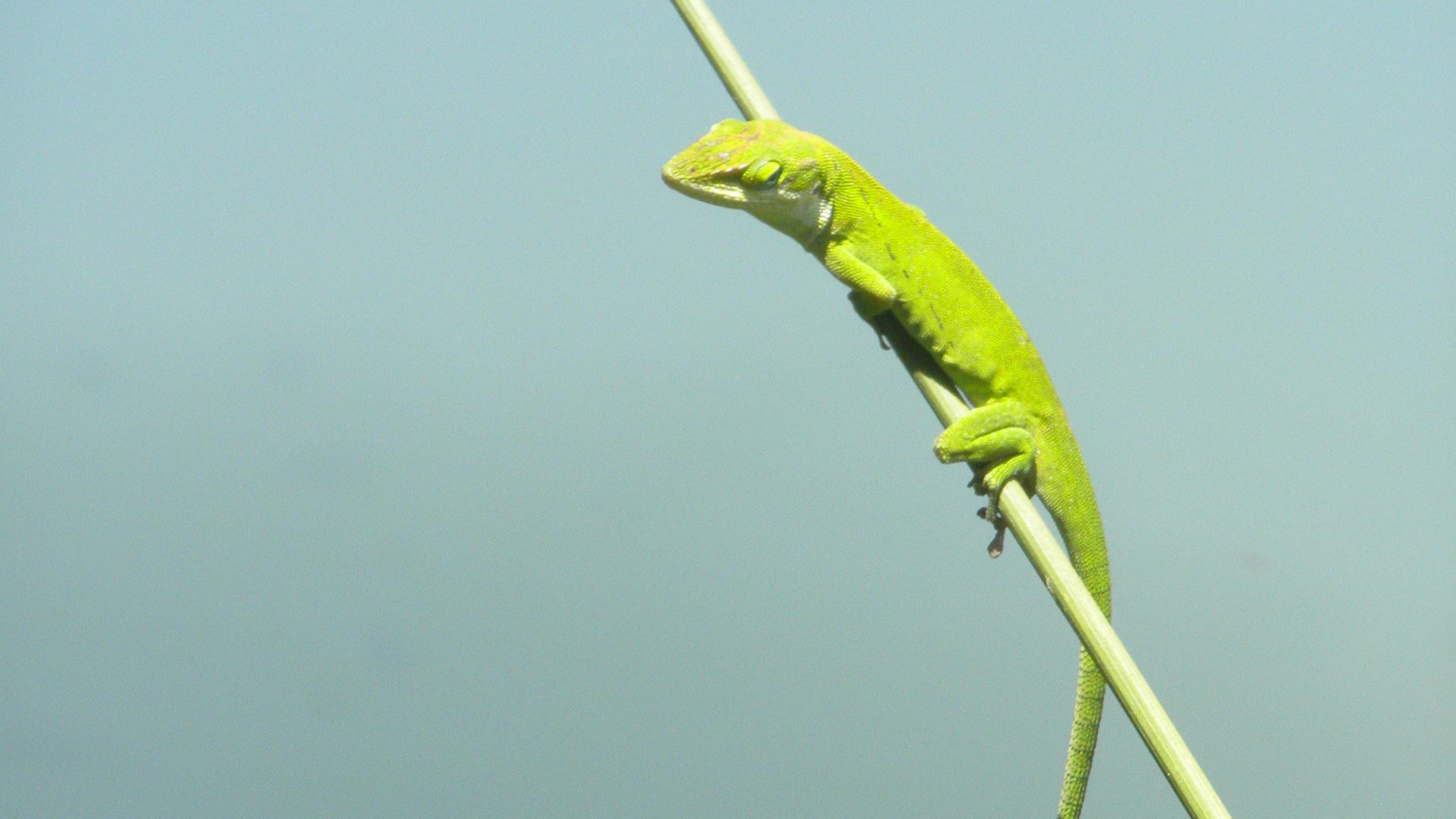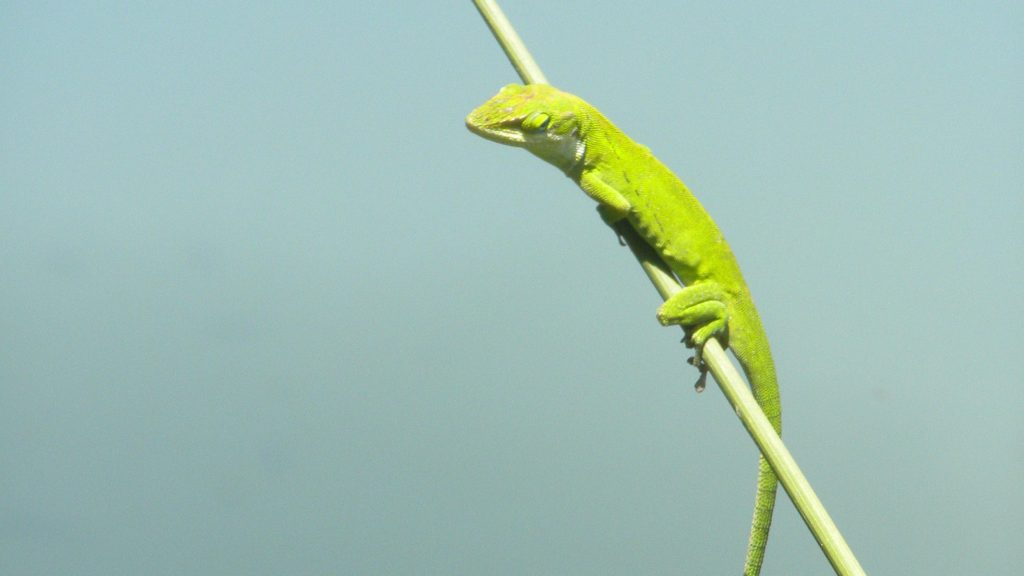Lizards are fascinating creatures that have a unique ability to change their colors in order to blend into their surroundings or communicate with other lizards. While chameleons are the most well-known color-changing lizards, there are actually many other species that possess this remarkable skill.
Some of these lizards, like the anoles, can change their colors rapidly, while others, like the bearded dragon, have limited color-changing abilities. In this article, we will explore the world of color-changing lizards beyond chameleons and discover the amazing ways in which they use their colors to survive and thrive in their environments.
– Anoles: They can change from bright green to brown or gray.
– Bearded dragons: They can change shades of brown and yellow to regulate their body temperature.
– Panther chameleons: While they are a type of chameleon, they deserve a mention for their incredible range of colors.

What Lizards Change Colors Besides Chameleons?
Lizards are fascinating creatures that come in all shapes, sizes, and colors. One of the most well-known abilities of lizards is their ability to change color, with chameleons being the most famous example. However, chameleons are not the only lizards that can change color. In fact, many other species of lizards have evolved to change color for a variety of reasons. In this article, we will explore some of the other lizards that can change color besides chameleons.
1. Anoles
Anoles are a type of lizard that are very common in the southeastern United States and the Caribbean. They are known for their ability to change color, which they use to communicate with other anoles and to regulate their body temperature. Anoles can change color from brown to green, and sometimes even blue.
Anoles are also known for their dewlap, which is a flap of skin under their chin. The dewlap can be extended to signal aggression or attract a mate. Anoles are a popular pet lizard, but they require specific care and attention.
2. Bearded Dragons
Bearded dragons are a popular pet lizard that come from Australia. They are known for their docile nature and unique appearance, with spiky scales on their throat that resemble a beard. Bearded dragons can change color for a variety of reasons, including mood, temperature, and breeding season.
Bearded dragons can change color from beige to brown, and sometimes even black. They may also turn orange or red when they are stressed or threatened. Bearded dragons require a specific diet and environment to thrive in captivity.
3. Green Anoles
Green anoles are another type of anole that are found in the southeastern United States and the Caribbean. They are known for their bright green color, which they can change to brown or gray depending on their mood and environment. Green anoles are also known for their ability to climb and jump, making them a popular pet lizard.
Green anoles require a specific environment with plenty of hiding spots and climbing opportunities. They also require a specific diet and temperature range to stay healthy.
4. Jackson’s Chameleon
Jackson’s chameleon is a species of chameleon that is native to East Africa. They are known for their three horns on their head and their ability to change color. Jackson’s chameleons can change color from green to brown, and sometimes even pink or orange.
Jackson’s chameleons require a specific environment with plenty of plants and hiding spots. They also require a specific diet and temperature range to stay healthy.
5. Panther Chameleon
Panther chameleons are a popular pet lizard that come from Madagascar. They are known for their bright and vivid colors, which they can change to blend in with their environment and communicate with other chameleons. Panther chameleons can change color from green to red, and sometimes even blue.
Panther chameleons require a specific environment with plenty of plants and hiding spots. They also require a specific diet and temperature range to stay healthy.
6. Uromastyx
Uromastyx is a type of lizard that is native to North Africa and the Middle East. They are known for their unique appearance, with spiky scales on their back and tail. Uromastyx can change color from beige to brown, and sometimes even black.
Uromastyx are herbivores and require a specific diet to stay healthy. They also require a specific environment with plenty of hiding spots and basking areas.
7. Veiled Chameleon
Veiled chameleons are a popular pet lizard that come from Yemen and Saudi Arabia. They are known for their ability to change color and their unique appearance, with a casque on their head. Veiled chameleons can change color from green to brown, and sometimes even yellow or orange.
Veiled chameleons require a specific environment with plenty of plants and hiding spots. They also require a specific diet and temperature range to stay healthy.
8. Water Dragons
Water dragons are a type of lizard that are native to Southeast Asia and Australia. They are known for their ability to change color and their unique appearance, with a long tail and spiky scales on their back. Water dragons can change color from green to brown, and sometimes even blue or yellow.
Water dragons require a specific environment with plenty of water and hiding spots. They also require a specific diet to stay healthy.
9. Blue-Tongued Skinks
Blue-tongued skinks are a popular pet lizard that come from Australia. They are known for their unique appearance, with a blue tongue and spiky scales on their back. Blue-tongued skinks can change color from beige to brown, and sometimes even black.
Blue-tongued skinks require a specific environment with plenty of hiding spots and basking areas. They also require a specific diet to stay healthy.
10. Crested Gecko
Crested geckos are a popular pet lizard that come from New Caledonia. They are known for their unique appearance, with a crest on their head and spiky scales on their back. Crested geckos can change color from brown to green, and sometimes even orange.
Crested geckos require a specific environment with plenty of hiding spots and climbing opportunities. They also require a specific diet to stay healthy.
In conclusion, many species of lizards have evolved to change color for a variety of reasons, including communication, temperature regulation, and camouflage. While chameleons are the most well-known lizards that can change color, there are many other species that are just as fascinating and unique. If you are considering getting a pet lizard, be sure to research the specific care requirements for the species you are interested in.
Freequently Asked Questions
In this section, we will answer some frequently asked questions about lizards that change color, besides chameleons.
Which lizards are known for changing colors?
While chameleons are the most commonly known lizards for changing colors, there are other species that can do the same. For instance, the anole lizard is known for changing its color from bright green to brown or gray. The bearded dragon is another lizard that can change its color based on its mood or temperature.
Some gecko species, such as the Gold Dust Day Gecko, also have the ability to change their color according to their surroundings. This helps them blend in and avoid predators.
What purpose does color change serve for lizards?
Lizards change color for various reasons. One of the main reasons is to regulate their body temperature. When they are cold, they tend to become darker in color, which helps them absorb more heat from the sun. On the other hand, when they are too hot, they become lighter to reflect the sunlight and keep their body temperature down.
Color change can also serve as a form of communication among lizards. For example, male anoles will change their color to show aggression towards other males during mating season.
Do all lizards have the ability to change color?
No, not all lizards have the ability to change color. In fact, most lizard species have a fixed color that does not change throughout their lifetime. The ability to change color is usually found in species that live in environments where they need to blend in or regulate their body temperature.
Furthermore, the extent to which a lizard can change color varies between species. While some lizards can change their color drastically, others can only change slightly.
How fast can lizards change their color?
The speed at which lizards can change color varies between species. Some lizards, such as the chameleon, can change their color in a matter of seconds, while others may take several minutes or even hours to change color.
The speed of color change also depends on the reason behind it. For instance, if a lizard is changing color to regulate its body temperature, the process may take longer than if it is changing color to avoid a predator.
Can lizards change their color throughout their lifetime?
Yes, the ability to change color can continue throughout a lizard’s life. However, the extent to which they can change color may decrease as they age. For instance, younger anole lizards are able to change their color more drastically than older ones.
Furthermore, changes in color may also depend on the lizard’s health and environment. A healthy lizard living in an environment with plenty of food and water will be more likely to change color than a sick or stressed lizard in a less hospitable environment.
Chameleon Changing Color – Best Of Chameleons Changing Colors Compilation
In conclusion, while chameleons are the most well-known lizards for their stunning color-changing abilities, there are several other species that also have this impressive talent. The most notable lizards that change colors besides chameleons include anoles, geckos, and agamas.
Anoles, also known as American chameleons, can change their colors to blend in with their surroundings and to communicate with other anoles. Geckos, on the other hand, change their colors in response to temperature and light conditions. Lastly, agamas change colors to regulate their body temperature and to intimidate potential predators.
Overall, the ability to change color is an important adaptation for many lizards, allowing them to survive in a variety of environments and to communicate with others of their species. While chameleons may be the most well-known color-changing lizards, it is important to recognize and appreciate the unique abilities of other species as well.


